 | TODAY IN SCIENCE HISTORY NEWSLETTER - 29 JUNE |
| Feature for Today |
 On 29 Jun 1956, the Act that made possible the modern interstate highway system in the U.S. was signed by President Dwight D. Eisenhower. Eisenhower had seen the speed and efficiency in moving troops and equipment on the four-lane autobahns in Germany during WW II. On 29 Jun 1956, the Act that made possible the modern interstate highway system in the U.S. was signed by President Dwight D. Eisenhower. Eisenhower had seen the speed and efficiency in moving troops and equipment on the four-lane autobahns in Germany during WW II. You can read a newspaper article from the next day reporting Eisenhower Signs Road Bill. |
| Book of the Day | |
| |
| Quotations for Today | |
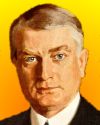 | "Unfortunately, only a small number of patients with peptic ulcer are financially able to make a pet of an ulcer." |
 | "More than any single action by the government since the end of the war, this one would change the face of America with straightaways, cloverleaf turns, bridges, and elongated parkways. Its impact on the American economy—the jobs it would produce in manufacturing and construction, the rural areas it would open up—was beyond calculation." |
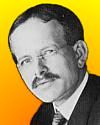 | "Like buried treasures, the outposts of the universe have beckoned to the adventurous from immemorial times. Princes and potentates, political or industrial, equally with men of science, have felt the lure of the uncharted seas of space, and through their provision of instrumental means the sphere of exploration has made new discoveries and brought back permanent additions to our knowledge of the heavens." |
| QUIZ | |
| Before you look at today's web page, see if you can answer some of these questions about the events that happened on this day. Some of the names are very familiar. Others will likely stump you. Tickle your curiosity with these questions, then check your answers on today's web page. | |
| Births | |
 |  George Ellery Hale, born 29 Jun 1868, was an American astronomer known for his development of important astronomical instruments, including the Hale telescope (completed 1948), a reflecting telescope at the California Institute of Technology's Palomar Mountain Observatory near Pasadena. He is known also for his researches in solar physics, particularly his discovery of magnetic fields in sunspots. George Ellery Hale, born 29 Jun 1868, was an American astronomer known for his development of important astronomical instruments, including the Hale telescope (completed 1948), a reflecting telescope at the California Institute of Technology's Palomar Mountain Observatory near Pasadena. He is known also for his researches in solar physics, particularly his discovery of magnetic fields in sunspots. To the nearest 10 inches, what is the size of the reflector? To the nearest 10 inches, what is the size of the reflector? |
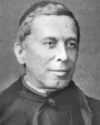 |  Pietro Angelo Secchi, born 29 Jun 1818, was an Italian Jesuit priest and astrophysicist, who made the first survey of the spectra of over 4000 stars and suggested that stars be classified according to their spectral type. He studied the planets, especially Jupiter, which he discovered was composed of gasses. Secchi studied the dark lines which join the two hemispheres of Mars. Pietro Angelo Secchi, born 29 Jun 1818, was an Italian Jesuit priest and astrophysicist, who made the first survey of the spectra of over 4000 stars and suggested that stars be classified according to their spectral type. He studied the planets, especially Jupiter, which he discovered was composed of gasses. Secchi studied the dark lines which join the two hemispheres of Mars. What did he call the dark lines? What did he call the dark lines? |
| Deaths | |
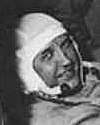 Viktor I. Patsayev |  On 29 Jun of a certain year, three Soviet cosmonauts died while during the re-entry of their Soyuz spacecraft. The accident was due to a premature cabin decompression. On 29 Jun of a certain year, three Soviet cosmonauts died while during the re-entry of their Soyuz spacecraft. The accident was due to a premature cabin decompression. In what decade did this happen? In what decade did this happen? |
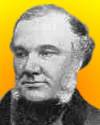 |  Thomas Addison (1793-1860) was an English physician who was the first person to correctly connect the symptoms of what is now called Addison's disease to a functional deficiency of certain glands. Thomas Addison (1793-1860) was an English physician who was the first person to correctly connect the symptoms of what is now called Addison's disease to a functional deficiency of certain glands.  Which glands did he identify? Which glands did he identify? |
| Events | |
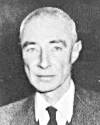 |  In 1954, the Atomic Energy Commission, by a vote of 4 to1 decided against reinstating a certain very prominent scientist's access to classified information. The Atomic Energy Act of 1946 required consideration of "the character, associations, and loyalty" of the individuals engaged in the work of the Commission. Substantial defects of character and imprudent and dangerous associations, particularly with known subversives who place the interests of foreign powers above those of the United States, were considered reasons for disqualification. In 1954, the Atomic Energy Commission, by a vote of 4 to1 decided against reinstating a certain very prominent scientist's access to classified information. The Atomic Energy Act of 1946 required consideration of "the character, associations, and loyalty" of the individuals engaged in the work of the Commission. Substantial defects of character and imprudent and dangerous associations, particularly with known subversives who place the interests of foreign powers above those of the United States, were considered reasons for disqualification. Can you name the scientist? Can you name the scientist? |
| Answers |
When you have your answers ready to all the questions above, you'll find all the information to check them, and more, on the June 29 web page of Today in Science History. Or, try this link first for just the brief answers. Fast answers for the previous newsletter for June 28: the influence exercised by various parts of the embryo that directs the development of groups of cells into particular tissues and organs; the discovery of Neptune; birds; funds in his will for the founding of the Smithsonian Institution; 14; the decade including the year 1954; magnesium. |
| Feedback |
 If you enjoy this newsletter, the website, or wish to offer encouragement or ideas, please send feedback by using your mail reader Reply button. If you enjoy this newsletter, the website, or wish to offer encouragement or ideas, please send feedback by using your mail reader Reply button. |
--
If you do not want to receive any more newsletters, this link
To update your preferences and to unsubscribe visit this link
If you do not want to receive any more newsletters, this link
To update your preferences and to unsubscribe visit this link
! !




Δεν υπάρχουν σχόλια:
Δημοσίευση σχολίου